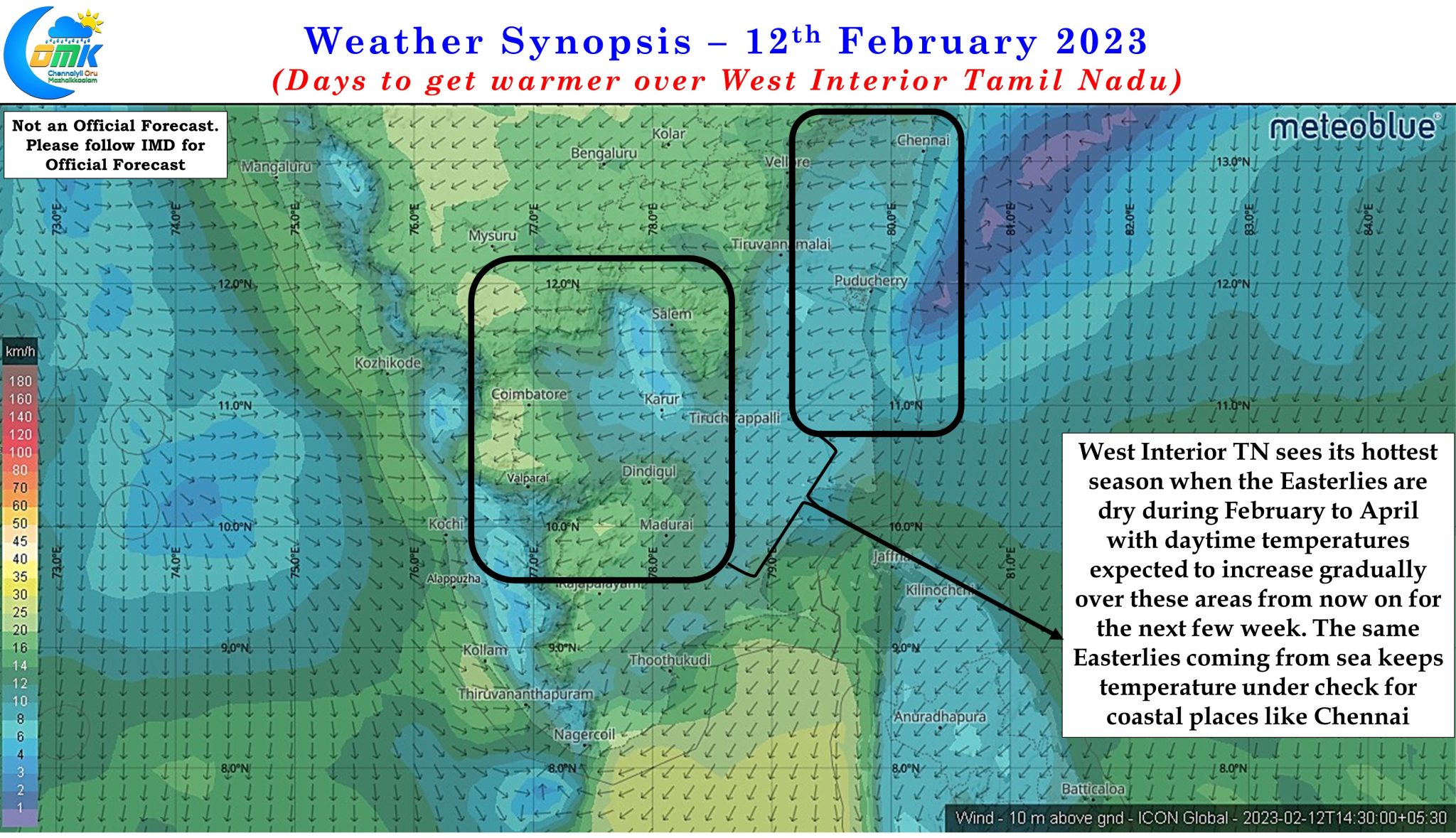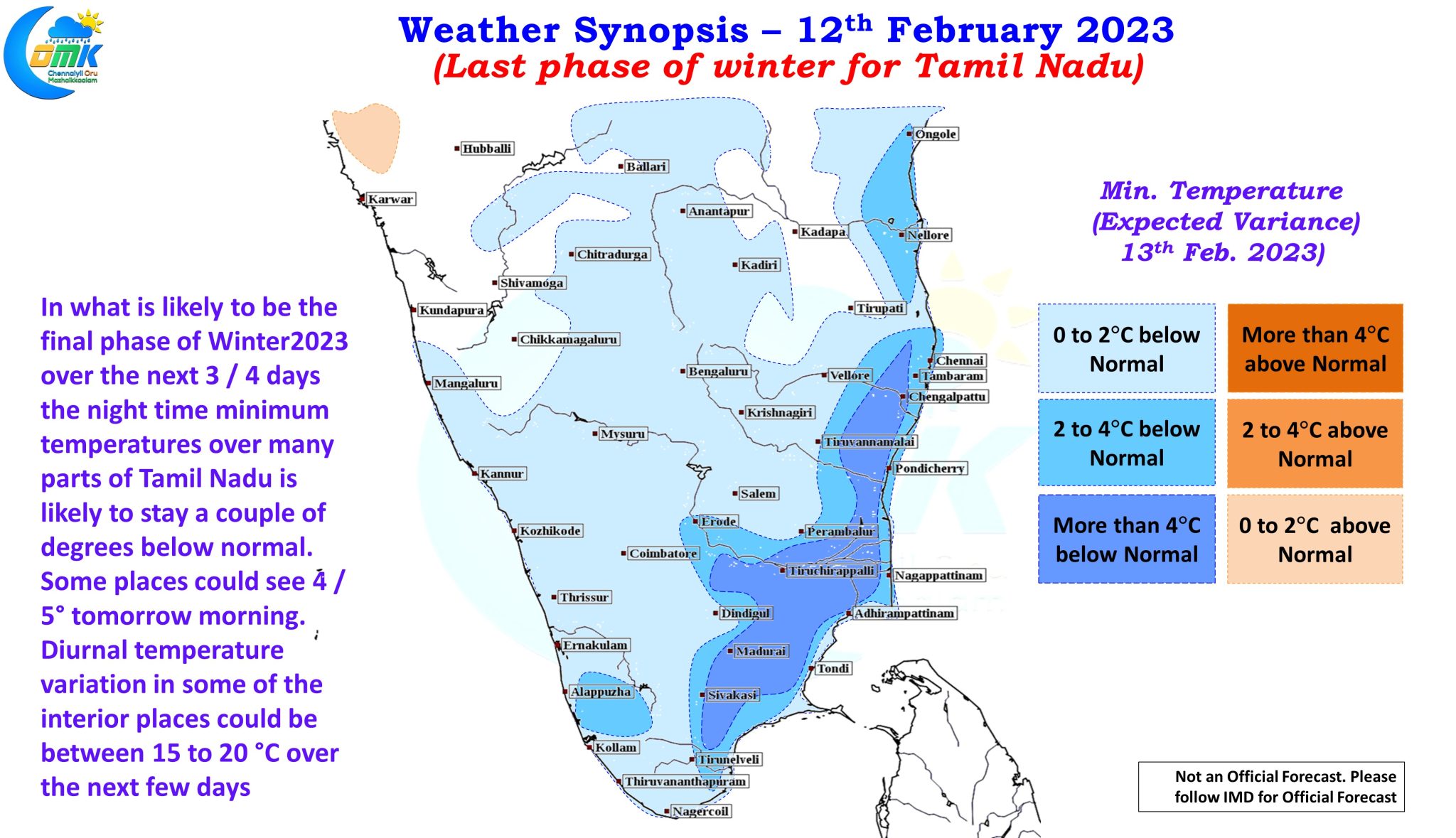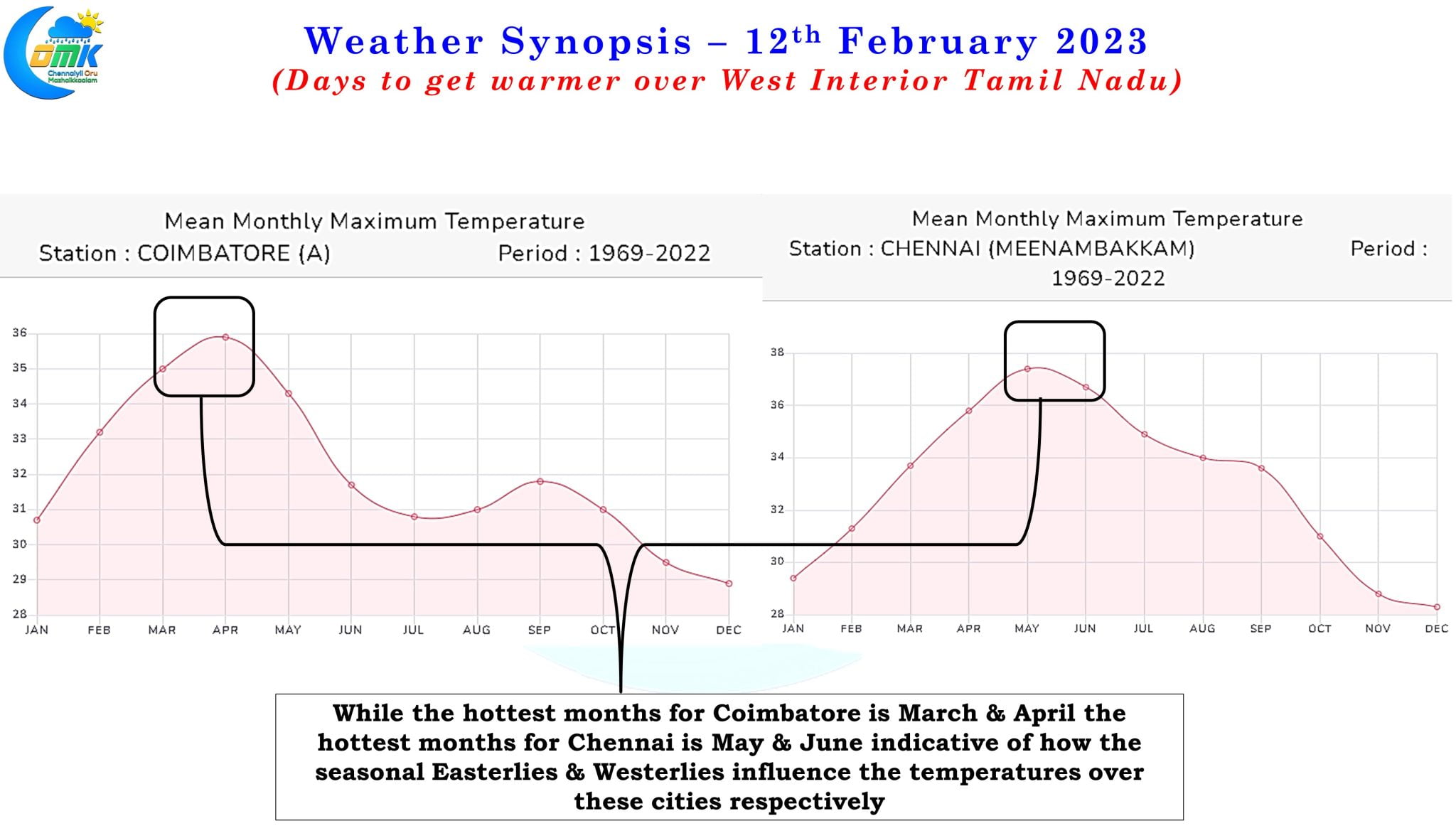The Indian Summer Monsoon is one of the best examples of the intricate interaction between Sun & Wind to create a large scale weather phenomenon. The relentless summer sun triggers a large scale vacuum over the Indian subcontinent creating a huge area of low pressure. When the air moves in to fill up this vacuum from the Mascarene High over the southern hemisphere it picks up moisture over Arabian Sea to become monsoon winds. In a way as often mentioned the Indian Summer Monsoon is also a global scale land / sea breeze phenomenon.
It is this intricate interplay between sun and wind over various time of the year that creates summers at different times for different parts of the Indian subcontinent. Though the months of April & May is possibly the first that comes to the mind of many when summer is mentioned it becomes important to point out the west coast of Peninsular India gets heated up much faster compared to the rest of the Indian subcontinent. The seasonal easterlies between October & April become drier during the second half of its seasonal cycle bringing about an increase in temperatures to the west coast while the east coast temperatures get modulated by the same winds coming from the sea. As the seasonal winds change from east to west around April the west coast of Peninsular India sees a reduction in temperatures while the east coast starts heating up.




Typically February & March are the months when west coast of Peninsular India sees its warmest time of the year. West interior Tamil Nadu also sees its warmest time of the year along with the adjoining coast as dry Easterlies bring the land heat across the state to this region thereby increasing the day time maximum temperatures. If one were to look at the temperature average for Coimbatore AP the hottest months are March and April while Chennai’s hottest months are May and June indicative of how the winds are a crucial part of the temperature equation and it is not just Sun alone that defines summer for places. With the Easterlies becoming drier over Peninsular India and overall suppressed atmospheric conditions prevailing the days are expected to get warmer over West interior Tamil Nadu and some parts of South TN as well. Places in the Kongu belt are expected to gradually see day time maximum temperatures cross 35 / 36°C regularly from now on as summer conditions firm over these places.
Ironically weather models indicate night time minimum temperatures are expected to remain a couple of degrees below normal for most parts of Tamil Nadu over the next few days with some of the places seeing 4 / 5°C below normal minimum temperatures as the last phase of winter conditions prevail before completely flipping to the heat regime with gradual increase in night time temperatures too. Some of the places in interior TN may see diurnal variation (difference between maximum & minimum temperatures) touch between 15 to 20°C


